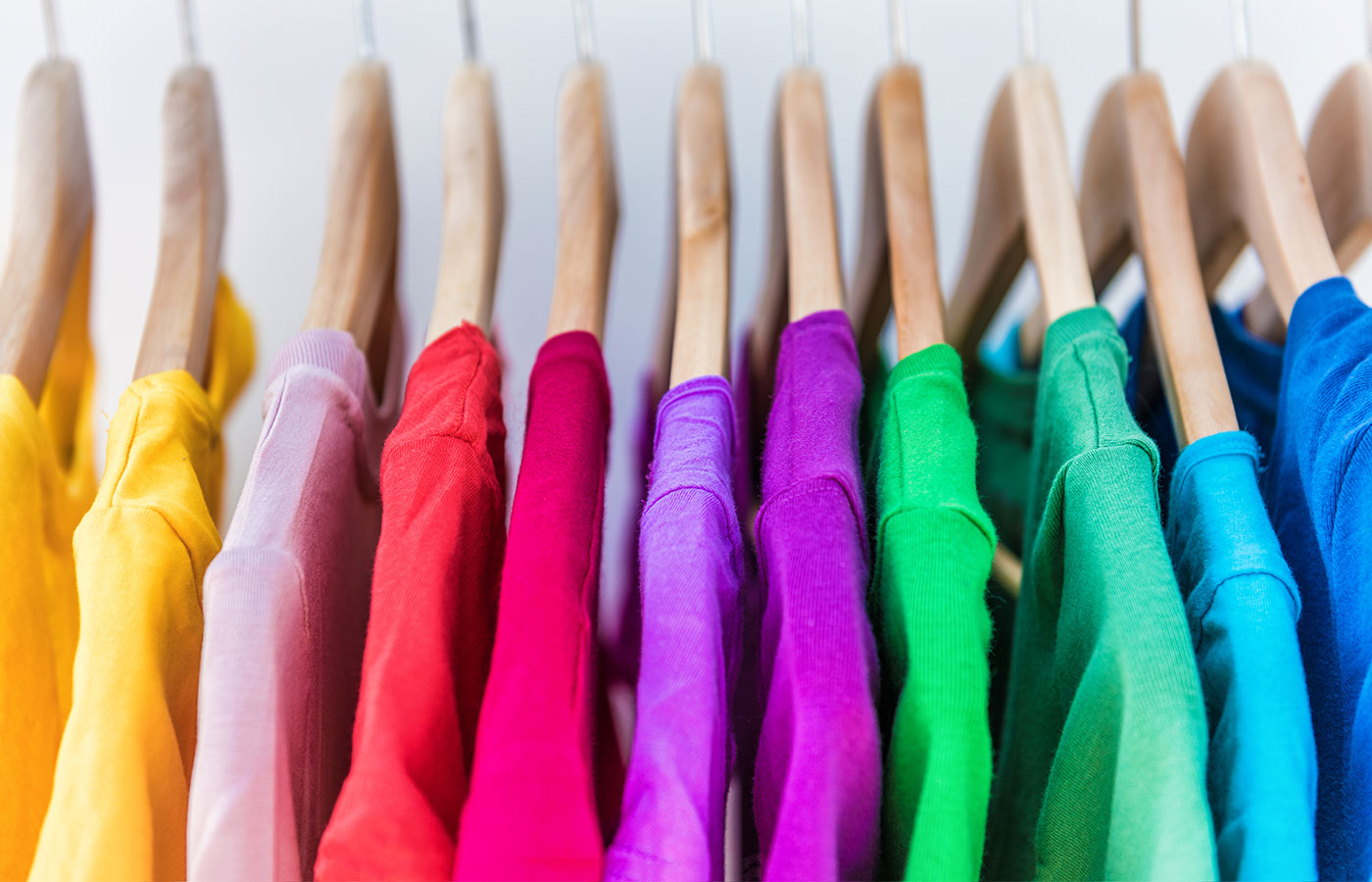The Role of Fabric in Defining Quality in Branded Clothing
The Role of Fabric in Defining Quality in Branded Clothing
Blog Article
Recognizing Clothing: The Value of Material Selections in Your Closet
The choice of material in apparel plays an essential duty in both visual appeals and capability. Different products offer differing levels of breathability, convenience, and longevity, straight affecting the wearer's experience. Recognizing these nuances can enhance one's closet markedly. Several neglect how these selections can influence not simply individual design, but additionally sustainability. What material choices could redefine your wardrobe and straighten it with both design and duty?
The Duty of Fabric in vogue and Capability

Typical Material Kinds and Their Attributes
When picking clothing, recognizing the qualities of common fabric kinds is crucial for making educated selections. Cotton, a widely-used all-natural fiber, is recognized for its breathability, softness, and adaptability, making it appropriate for informal wear and everyday garments. Bed linen, one more natural alternative, flaunts excellent moisture-wicking homes and a distinct structure, ideal for warm climates.Wool, usually preferred for its heat and longevity, differs in excellence; merino wool is soft against the skin, while coarser types are utilized for outerwear. Synthetic fabrics like polyester and nylon provide toughness and resistance to wrinkles, making them popular for activewear and traveling garments. Blends, which incorporate artificial and natural fibers, can boost functionality while keeping comfort. By identifying these textile attributes, people can select clothes that aligns with their way of living and visual preferences.
Breathability and Convenience: Choosing the Right Fabrics for Various Environments
Choosing the best materials for different climates can considerably boost convenience and overall wearability. Breathable products are necessary in hot environments, as they permit air flow and moisture evaporation. Fabrics such as cotton, bed linen, and moisture-wicking synthetics properly attract sweat away from the body, maintaining the user cool and dry. Conversely, in cooler environments, thicker materials like woollen or fleece offer insulation while maintaining breathability, guaranteeing warmth without overheating.Additionally, the option of material weight plays a crucial duty; lightweight materials are more effective for summer season, whereas heavier choices are fit for winter season wear. Recognizing the special residential properties of each fabric enables people to clothe properly for varying weather. Inevitably, selecting comfortable and breathable fabrics customized to particular environments can substantially boost everyday comfort and boost the total experience of putting on clothes.
Sturdiness and Treatment: Exactly How Fabric Impacts Longevity of Your Closet
Choosing the ideal materials can greatly influence the durability and care demands of a wardrobe. Fabrics such as cotton and polyester are understood for their strength and ease of maintenance, making them excellent for everyday wear. In contrast, delicate products like silk and lace need even more mindful handling and specialized cleansing approaches, which can raise the moment and initiative needed for care. Branded Clothing.Durability is additionally affected by the fabric's weave and coating; snugly woven textiles tend to stand up to deterioration better than loosely woven options. Furthermore, synthetic blends usually provide enhanced toughness, incorporating the most effective qualities of multiple fibers.Understanding the treatment directions for each and every material is crucial, as incorrect washing or drying out can bring about premature wear. Ultimately, selecting resilient products can lead to a longer-lasting closet, decreasing the frequency of substitutes and contributing to a much more sustainable fashion selection
The Impact of Textile on Fit and Shape

Sustainable Material Choices: Making Eco-Friendly Choices
The effect of material extends beyond fit and shape to encompass environmental elements, prompting a growing passion in lasting material options. Eco-friendly textiles, such as organic cotton, hemp, and Tencel, are acquiring grip among customers who prioritize sustainability in their closets. These materials are commonly generated with fewer chemicals and water, reducing their environmental footprint.Additionally, recycled textiles, made from post-consumer waste, use a cutting-edge remedy to the fabric sector's pollution trouble. Brands significantly embrace transparency in their sourcing approaches, enabling customers to make enlightened choices about their purchases.Choosing sustainable fabrics not only sustains honest i thought about this methods but also encourages the fashion business to embrace even more responsible manufacturing methods. As understanding of ecological issues climbs, people are prompted to assess the long-term impact of their material options, cultivating a movement in the direction of a more sustainable and environmentally conscious strategy to fashion.
Elevating Design: How Textile Can Transform an Attire
While several may concentrate on shade and cut when picking a clothing, the option of fabric plays a vital role in raising style and boosting overall look. Different materials share distinctive state of minds and messages; as an example, silk shows luxury and elegance, while jeans offers a casual, kicked back ambiance. The appearance and drape of a material can substantially change the shape, with organized textiles providing a sleek look and softer ones creating a much more fluid, loosened up aesthetic.Moreover, the weight of the textile affects wearability across periods. Light-weight textiles like linen and cotton are optimal for summer season, while heavier materials such as woollen and velvet give warmth and beauty in cooler months. Recognizing material buildings, such as breathability and stretch, also empowers people to make educated choices that improve comfort without jeopardizing style. Inevitably, the ideal textile can transform an outfit from normal to phenomenal, making it a crucial factor to consider in any type of closet.
Frequently Asked Concerns
Just how Do I Recognize the Textile Content of My Clothing?
To determine material material, one can examine care tags, conduct burn examinations for fiber recognition, or seek advice from material examples. These techniques help separate products, ensuring informed selections for apparel care and maintenance in daily wear.
Can Fabric Option Affect My Mood or Confidence?
Textile selection can significantly affect a person's mood and confidence. Branded Clothing. Particular materials may evoke feelings of comfort or beauty, while others can really feel uncomplimentary or limiting, eventually influencing self-perception and emotional wellness throughout the day
What Fabrics Are Ideal for Delicate Skin?
For people with delicate skin, all-natural materials like linen, bamboo, and cotton are commonly suggested. These products are breathable, hypoallergenic, and much less most likely to create irritation, making them appropriate selections for comfort and skin health and wellness.
Just how Do I Properly Clean and Take Care Of Different Fabrics?
To properly wash and care for various textiles, one need to take into consideration each product's details demands, including temperature setups, cleaning agents, and drying techniques, making sure durability and keeping the material's original top qualities for excellent the original source usage.
Are There Certain Fabrics for Athletic or Efficiency Put On?
Sports or performance wear frequently uses fabrics such as polyester, spandex, and nylon. These products are made for moisture-wicking, breathability, and flexibility, boosting activity and convenience throughout exercises while giving durability and assistance. Conversely, in colder climates, thicker materials like woollen or fleece provide insulation while maintaining breathability, guaranteeing heat without overheating.Additionally, the choice of material weight plays an essential duty; lightweight fabrics are more effective for summertime, whereas heavier options are matched for wintertime wear. In contrast, fragile materials like silk and lace require more cautious handling and specialized cleaning techniques, which can boost the time and effort required for care.Durability is also influenced by the fabric's weave and coating; tightly woven materials often tend to resist wear and tear far better than loosely woven alternatives. In comparison, inflexible textiles can limit motion however offer a classic, refined look.Moreover, the thickness and structure of the fabric can influence the visual perception of body form. The influence of textile extends past fit and shape to encompass environmental aspects, motivating a growing rate of interest in sustainable fabric selections. The texture and drape of a fabric can drastically alter the silhouette, with structured fabrics offering a polished appearance and softer ones creating a more fluid, relaxed aesthetic.Moreover, the weight of the fabric influences wearability throughout seasons.
Report this page